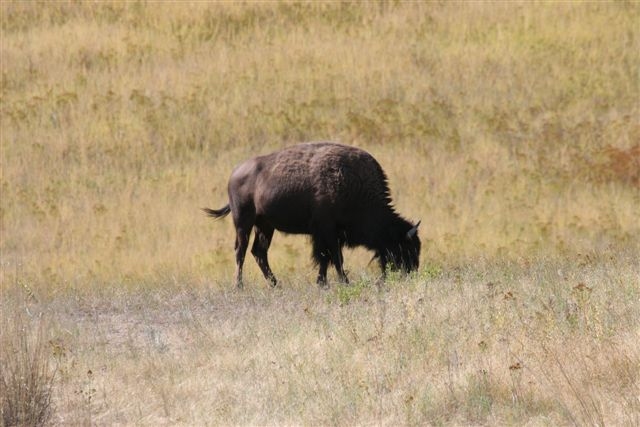Isn't this a beautiful sight? Bison roaming free in Bison National Park. This is just one reason we all need a reminder very now and then that preserving our natural environment is important.
For several years now there has been a great deal of discussion about being "green" and companies proudly announce that they are environmentally friendly, LEED certified etc. But what does all this really mean? Do I have a carbon footprint and, if so, does it come in a size 7? How do I become "green"? While I am no expert, let me attempt to briefly answer some of these questions.
- What is the definition of "green"? The term green simply refers to a person, product, or process that is earth friendly meaning that consideration has been given to the effects the project or process will have on resources like water, air quality, surrounding communities, animal habitats etc. As you can see, it is a wide encompassing term that can be applied to many areas of business and life. It is synonymous with eco-friendly, environmentally friendly etc. Contrary to what Kermit the Frog says, it really is easy to be green. Just take a moment to think about what you are doing before you waste water, throw out reusable products, drive gas guzzling vehicles or burn trash.
- Recycle repurpose, reuse, renew. All of these terms are bantered about when talking about manufacturing processes. The goal of many businesses these days is to recycle and reuse much of their manufacturing waste into other usable products. Here at Martin Pierce we use the lost wax method of casting that literally captures left over wax for future castings, hire local workers and use as many Made in America products as possible.
- LEED is the acronym for Leadership for Energy and Environmental Design. It provides the guidelines necessary for a building to be considered environmentally friendly and these would include energy efficiency, impact on surrounding community, hiring of local workers etc.
- What is a carbon footprint? Simply put, your carbon footprint is the impact you and your actions have had on the environment during a specific time period, specifically the amount of greenhouse gases you have emitted into the atmosphere in the form of gasoline use, coal for a furnace and even the amount of electricity used.
No need to be fanatical about it--simple things like buying locally to reduce transportation costs, avoiding bottled water, telecommuting if possible, lowering your thermostat and planting indigenous plants that require less water will all help.
For information on our products and to get the latest news on what is happening at Martin Pierce, please visit us at www.martinpierce.com

